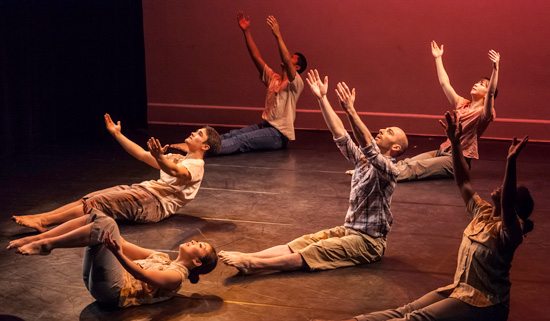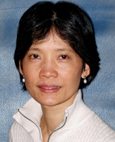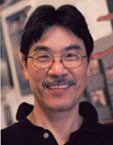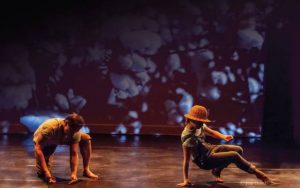
 In 1850, news of the California Gold Rush reached China, leading 300,000 Chinese immigrants to settle in the United States -- a few of whom settled in the American South. After the emancipation of slavery, there was work. They worked in cultural isolation facing countless societal barriers, but from field laborers to business owners, endured and prevailed. H.T. Chen and Dian Dong's South of Gold Mountain, a documentary dance work that will be presented at New York Live Arts October 15018, sets out to illuminate and pay respect to this often overlooked history. The work is the result of an extensive three-year process of research, gathering photographs, conducting interviews, and transforming it all into a contemporary modern dance piece.
In 1850, news of the California Gold Rush reached China, leading 300,000 Chinese immigrants to settle in the United States -- a few of whom settled in the American South. After the emancipation of slavery, there was work. They worked in cultural isolation facing countless societal barriers, but from field laborers to business owners, endured and prevailed. H.T. Chen and Dian Dong's South of Gold Mountain, a documentary dance work that will be presented at New York Live Arts October 15018, sets out to illuminate and pay respect to this often overlooked history. The work is the result of an extensive three-year process of research, gathering photographs, conducting interviews, and transforming it all into a contemporary modern dance piece.
Among the contributors present at a press forum on Monday were Dr. John Jung, Ph.D., who was born in 1937 and grew up in Macon, Georgia; Martha Pang Chan, born in 1930 at her parents’ grocery store in Robinsonville, Mississippi; Kellogg Wong, born in 1928 in Rosedale, Mississippi; Virginia Wing, born in Marks, Mississippi; and Frieda Quon, a lifelong resident of the Mississippi Delta. These few, however, were “just the tip of the iceberg of all who we talked to,” according to Dong. At the forum, I had honor of listening to some of the stories about family businesses in grocery stores or laundromats. I heard stories of “quiet pride and determination” and chuckles along with the storytellers as they reminisced. As Frieda, a full-hearted, Chinese-American woman with a proud Southern accent explained, “There were bad times, but there were good times too.” Speaking of her parents’ endless work, Frieda went on to say, “We were poor, but we didn’t know it. We had food, we had shelter, our parents loved us.”
After watching some excerpts from South of Gold Mountain, I spoke with H.T. Chen and Dian Dong about their research and choreographic experiences of this project.
How were you able to collect all of these stories?

Dian Dong: There was a huge outpouring of people wanting their stories told, but at first, being polite… you couldn’t start. I know a little bit of my own native language that only those who came over 51 years ago, like my family, speak a village dialect. So I just used a little bit to break the ice. And then, they consider you family. Because they rely on family and extended family, then suddenly you are extended family. So they made us cancel our hotel reservations, they said, “don’t go to that restaurant, eat with us,” then, “everyone’s bringing their family albums to show you!” They were sepia-toned, priceless, historic photographs, you know? It was really amazing.
How did start the process of putting the stories on the stage?
H.T. Chen: My concept is a contemporary modern dance, art to reflect society. I learned a lot from Anna Sokolow who is a great choreographer. She was my teacher. She always liked to target society.
Dian: We decided that when we would make the piece, we would take it right back to the South where it came from and see what the reaction is. So we went to Birmingham, Alabama and Cleveland, Mississippi. We also took it to Arizona. We alternated abstract sections with the more literal sections. So if [the audience is] really puzzled over [something] there’s something [else] to hang on to. And I think that formula works. Some people may be puzzled asking, “why did they choreograph a piece with this format,” but it’s specific because of the audiences we’re playing to. We actually like the format because we believe that movement speaks, and you’ll get the message.
I really enjoyed the section where the dancers take turns traveling downstage and the others jump in front as obstacles, which reminded me of what we were talking about earlier: obstacle after obstacle, hardship after hardship, each of these stories are about being driven to keep moving forward.

H.T.: You want to go forward, but sometimes society pulls you back.
Dian: [The dancers] represent society, which is why we have them coming out of nowhere. They aren’t humans, they are obstacles in your path. You see an African-American, then an Asian… in a nutshell, it tells the story of what the situation was there. Every section has elements where you can read it however you want, but it’s also pretty clear.
What within the process or in the research did you expect to find and what surprised you or went in such a way that you did not expect?
H.T.: What didn’t really surprise me was all the people in the South, they actually really wanted to talk about it. They hadn’t had a chance before.
Dian: Right, they actually do want to [talk] because they’ve been invisible their whole lives.
H.T.: This art form to talk about it is a perfect match. And I think that is why they were all very supportive. In the beginning they didn’t know…
Dian: They thought we were a bunch of nosey northerners. (laughs) Now they trust us. If we would have went to Mississippi, and they didn’t like the piece, we better get on the first plane out of that place, you know what I mean? But, we were warmly received. It was a surprise that they drove 120 miles to see it. You see, Cleveland is so small, they didn’t have a movie house in the town. What happened was, that weekend, 50 Shades of Grey opened and the town cleared out as they drove two and a half hours to Jackson to see the film…movie… whatever. We were like, “Oh my goodness, what’s going on?” But then, our house was filled. And even though it was raining, they drove a 120 mile radius to come and see us.
H.T.: I was nervous because I didn’t know what they were going to say. But one thing that is very important is that everyone on stage be very true. This is not commercial; this is not entertainment. Its much deeper than those kinds of things.
Dian: The work has to speak of authenticity and innovation. We feel that we have really done the research and have been endorsed by, not only the Mississippi Delta Chinese Heritage Museum, but many family associations as well. Family associations are a very important presence and are leaders in the community.
H.T.: If we always look back, we know how to move forward. I’ll give you a very good example: Martha Graham was successful because she always looked back to the Greek tragedies. It’s culture. It’s not just modern dance.
What do you want the audience to know or to take away from South of Gold Mountain?
 Dian: I think it’s a real, clear demonstration of a true American story that talks about civil rights and perseverance. And it is a good lesson for the next generation. We were a hard-working, focused people, and civic-minded too. The little girl sitting in front of all the Coca Cola boxes stacked behind her [in one of the photographs], when she was an older teenager, she had appendicitis but couldn’t be treated at the hospital, because they didn’t treat Chinese people. But, when we stayed at the family house, she went through all the receipts and found $500 donated to this hospital and $500 to the ambulance service—always giving back to the community. Yet, they weren’t served. On the other hand, it’s like what Kennedy said, “Ask not what the country can do for you, but what you can do for your country.”
Dian: I think it’s a real, clear demonstration of a true American story that talks about civil rights and perseverance. And it is a good lesson for the next generation. We were a hard-working, focused people, and civic-minded too. The little girl sitting in front of all the Coca Cola boxes stacked behind her [in one of the photographs], when she was an older teenager, she had appendicitis but couldn’t be treated at the hospital, because they didn’t treat Chinese people. But, when we stayed at the family house, she went through all the receipts and found $500 donated to this hospital and $500 to the ambulance service—always giving back to the community. Yet, they weren’t served. On the other hand, it’s like what Kennedy said, “Ask not what the country can do for you, but what you can do for your country.”
We feel that there is plenty of art that will entertain you and wow you. That’s great, but on the other hand, let’s get real here. There’s things we should be paying attention to. And I think the values that were exampled, you can feel something, not just empathy, but direction for your life and focus. And also, to have more tolerance for people in a difficult situation, you understand because you’ve been immersed in the whole [project]. This kind of dialogue can really help us as a society.
Performances run October 15-18 at New York Live Arts. A post show discussion will follow each performance.